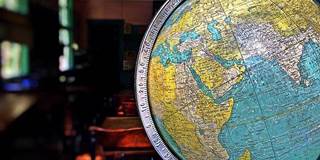Since its introduction by Chinese President Xi Jinping in 2013, the “one belt, one road” initiative, which entails the revitalization of the ancient overland and maritime Silk Road trade routes, has attracted considerable attention. For good reason: The project implies unprecedented opportunities – and challenges.
BEIJING – Since its introduction by Chinese President Xi Jinping in 2013, the “one belt, one road” initiative – an ambitious plan to revitalize the ancient Silk Road overland and maritime trade routes linking East and West – has attracted considerable attention. And for good reason: The project, which involves more than 60 countries and quite a few international organizations, implies unprecedented opportunities – and challenges.
The original Silk Road, established more than 2,000 years ago, was a critical network of trade routes that promoted economic, political, and cultural exchange among Asia, Africa, and Europe. China’s new “Silk Road Economic Belt” and “Twenty-First Century Maritime Silk Road” will do the same, with newly built or upgraded infrastructure facilitating the flow of trade, investment, culture, and ideas – and thus supporting shared economic growth.
From China’s perspective, the logic behind the strategy is clear. With its sources of GDP growth coming under increasing strain, China must continue to make progress in opening up the economy. That means building mutually beneficial relationships with neighboring countries, which can benefit by taking over some of China’s lower-value-added activities. That promises to boost their own growth while creating space for the Chinese economy to move up the value chain, where productivity and wages – important determinants of consumption – are higher.



BEIJING – Since its introduction by Chinese President Xi Jinping in 2013, the “one belt, one road” initiative – an ambitious plan to revitalize the ancient Silk Road overland and maritime trade routes linking East and West – has attracted considerable attention. And for good reason: The project, which involves more than 60 countries and quite a few international organizations, implies unprecedented opportunities – and challenges.
The original Silk Road, established more than 2,000 years ago, was a critical network of trade routes that promoted economic, political, and cultural exchange among Asia, Africa, and Europe. China’s new “Silk Road Economic Belt” and “Twenty-First Century Maritime Silk Road” will do the same, with newly built or upgraded infrastructure facilitating the flow of trade, investment, culture, and ideas – and thus supporting shared economic growth.
From China’s perspective, the logic behind the strategy is clear. With its sources of GDP growth coming under increasing strain, China must continue to make progress in opening up the economy. That means building mutually beneficial relationships with neighboring countries, which can benefit by taking over some of China’s lower-value-added activities. That promises to boost their own growth while creating space for the Chinese economy to move up the value chain, where productivity and wages – important determinants of consumption – are higher.